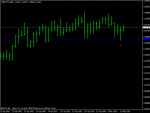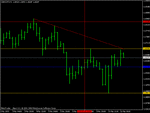Mornin', Tom.
Stops? Seems like an on going topic for discussion/arguement. The tight stops corner cry out 'proficiency', but i've never seen that particular arguement reasoned or properly argued against.
The other side of the coin in the context of tight stops, is that if a trader had extreme proficiency/skill then i'm sure stops wouldn't even be needed? Ok, maybe a safety stop is always needed, but not used in the terms as a real strategic play order?
Any views?
Hey Paul, I'm kind of tired of the whole argument to be honest. I've heard it regurgitated countless times by new_trader et al.
The best traders I have seen use tight stops and they know when to scalp and when to run a position. But these are the higher echelon of traders. For most of us (and this goes for even very successful traders that make a lot of money) tight stops and proficient entries mean they
exit quicker.
Why is it when somone can get an entry with a 1 tick stop that they don't seem to be able to run a profit? Perhaps because with a 1 tick stop, 5 ticks profit is a R:R of 5:1 which is excellent.
And yet that still doesn't impress me. Because I am in this to catch the big moves - that is my personality and that is my style of trading.
I couldn't give a flying f*ck if someone uses a super tight, proficient entry into the Bund with a stop of 1 tick at a double bottom, then takes 5 ticks and three months later we are 14 full points higher. I don't respect that. That's just me.
But I always found that those that use larger stops are inclined to take the larger moves. Not only because they need too, to make it work but because they are used to the market ebbing and flowing so they can hold their position longer.
Think about it, a person that uses a stop of 1 tor 2 ticks likes to NAIL their entry. As a result, they usually don't have the mental faculties to see a market go up 100 ticks and then retrace 40 before going up another 100. They would rather job it. They would like to get the 100. Then sell for 40. Then buy for the next 100. But ultimately they end up with lots of small gains rather than the position trader that takes the whole move.
I don't know how much sense this makes but it is something that I have found time and time again. The proficient traders, for the most part, can't seem to run things. Of course, THEORETICALLY they have the best advantage. A tight stop with unlimited gains. But this is THEORETICAL. It rarely works out like this in real life.
The traders that aren't as proficient, (like me, I am sure many would argue) can run things for the bigger moves because each tick doesn't "matter" - only the bigger picture.


